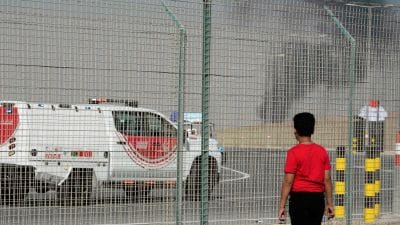Here is how to build an emergency fund on a tight budget
Consistent savings, even in small amounts, in the right instruments, can help you create this reserve.
 For beginners, recurring deposits (RDs) are a simple yet effective way to start an emergency fund. (Representational)
For beginners, recurring deposits (RDs) are a simple yet effective way to start an emergency fund. (Representational)Emergencies rarely arrive with warning. A job loss, a medical bill, or a sudden repair can quickly throw your finances off track. The best safeguard in such moments is an emergency fund, a simple buffer that protects you from unnecessary debt. You don’t need a windfall to start building it.
Consistent savings, even in small amounts, in the right instruments, can help you create this reserve.
Let’s look at how you can build one from scratch, even on a modest income.
How much should you save?
Aim to set aside at least three to six months of essential expenses. For example, if your monthly outgo on rent, food, and bills is ₹25,000, your target fund should be ₹75,000 to ₹1.5 lakh. This cushion provides vital support in case of job loss, illness, or other sudden costs. If that feels daunting, begin with one month’s expenses and build gradually.
Start small with recurring deposits
For beginners, recurring deposits (RDs) are a simple yet effective way to start an emergency fund. Offered by both banks and post offices, RDs automate savings and help build discipline. You set aside a fixed sum every month, just like a utility bill. Even saving ₹1,000 at 6% annual interest can grow to about ₹12,450 approximately in a year. As your income rises, increase your contribution.
Get quick access with savings accounts
Several banks now offer digital savings accounts with higher interest rates, often around 6 to 7 percent. The advantage—your money remains liquid, so you can withdraw it instantly during an emergency. This makes such accounts ideal for the first layer of your emergency fund. If your monthly expenses are ₹25,000, keeping at least one month’s worth here ensures quick access. It works like cash in hand, only safer and more rewarding.
Add short-term fixed deposits
Once you’ve accumulated savings worth ₹10,000 or more, park it in short-term fixed deposits (FDs) of 6 to 12 months. Banks today offer about 6 to 7 percent interest. Splitting the money into smaller FDs is wise, as you can break one when needed while the others keep earning. For instance, three FDs of ₹5,000 each give you flexibility and better returns than a savings account.
Explore liquid mutual funds
Liquid mutual funds are another option for emergencies. They invest in short-term debt instruments and typically yield 6–7 percent annually, which is slightly higher than savings accounts. Withdrawals are processed in a day, making them nearly as accessible as cash while remaining low-risk compared with equity funds.
Combine instruments for a laddered fund
The key is to avoid putting all your funds in one place. A balanced emergency fund works best when built in layers—instant cash in a savings account, short-term deposits like RDs or FDs, and near-liquid investments such as mutual funds.
For example, if your target is ₹1.5 lakh for six months of expenses, you could split it as ₹30,000 in savings, ₹50,000 in FDs, and ₹70,000 in liquid funds. This structure offers both access and growth while keeping risk low.
Building an emergency fund on a modest income is more about discipline than numbers. Start small,
automate your savings, and gradually move money into a mix of safe and accessible instruments.
Adhil Shetty is CEO, BankBazaar.com



- 01
- 02
- 03
- 04
- 05




























